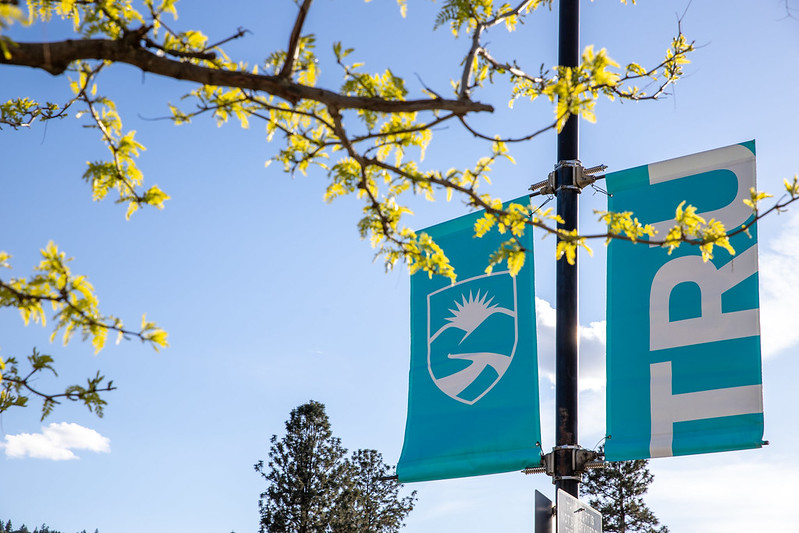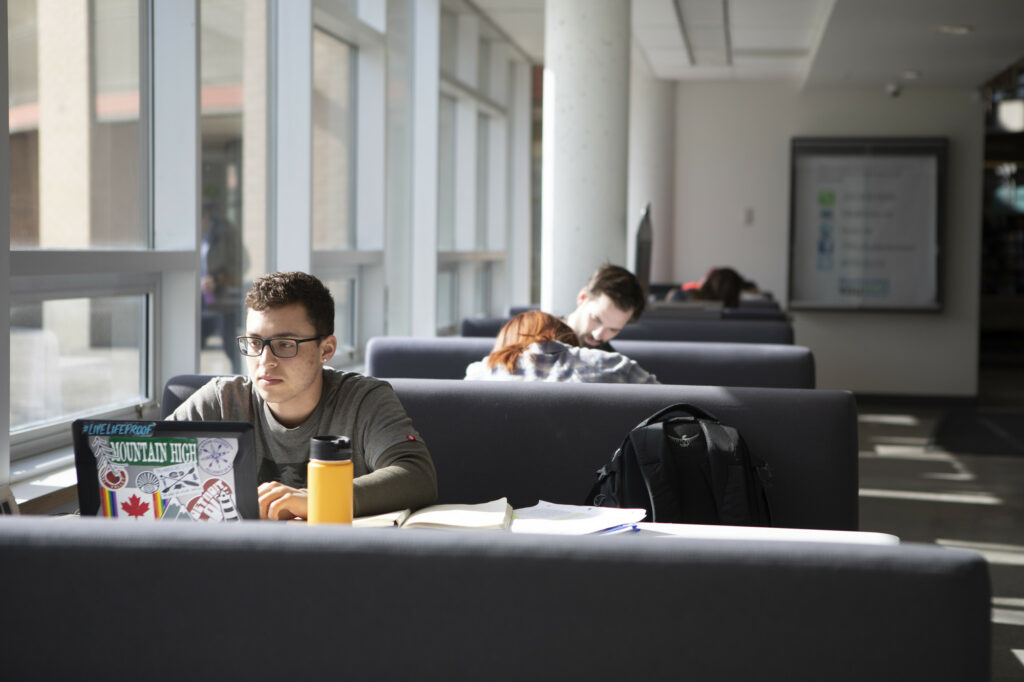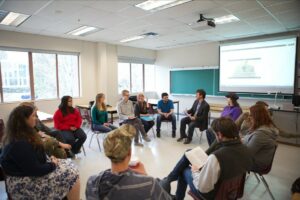Thompson Rivers University’s 140-plus programs offer educational opportunities for everyone, whether your passion is in arts, science, health care, business, trades and technology, adventure studies, or tourism. It doesn’t matter if your journey is a straight line, twisty road, or winding path, TRU has the program you need to open doors to a future full of opportunities.
The first step of the journey is your application!
Applications are now open as of October 1st. We thought this might be a good time to break down some university lingo to make the application process clearer for you.

Students at TRU
We can essentially separate students into four categories at TRU based on the studies they’re pursuing.
1. UNDERGRADUATE STUDIES
Undergraduate programs are those that can be completed right out of high school. Whether it’s a certificate (1 year), a diploma (2 years), or a bachelor’s degree (4 years), you don’t need any previous post-secondary education to apply.
This also includes trades programs. The School of Trades and Technology offers foundation and apprenticeship training in 20 trades backed by the Industry Training Authority of BC.
If you do not meet the admission requirements for a given program – like for example you have not taken a pre-requisite course or need to take a course again for a higher grade – you can upgrade through our University Preparation (UPrep) department.
2. GRADUATE STUDIES
Graduate degrees can be obtained once you have already completed a bachelor’s degree.
3. INTERNATIONAL STUDENTS
If you are not a Canadian citizen or permanent resident, you are considered an international student.
4. OPEN LEARNING
Open Learning is our online studies option with flexible online and distance learning.

Types of Undergraduate Programs
In the Future Students Office, we work with domestic undergraduate students, which means we work with students pursuing undergraduate studies, trades programs, and sometimes those who need to upgrade through UPrep.
But let’s dig a little deeper into the different types of undergraduate programs, since that is what we specialize in after all! Knowing this information will also help as you navigate through the world of admission requirements, application deadlines, and offer letters – it all sounds complicated until we break it down, so stick with us here!
OPEN (NON-COMPETITIVE) ADMISSION PROGRAMS:
These programs do not have a limit on how many students they accept each year. These programs do have minimum admission requirements, but upgrading is possible if you’re missing any of the requirements.
Examples of open admission programs include Bachelor of Arts, Bachelor of Science, and Bachelor of Business Administration.



LIMITED ADMISSION PROGRAMS:
There are only a certain number of seats available in these programs and you must meet the admissions requirements to be accepted. We like to say “first applied, first qualified, first admitted.”
Examples of limited admission programs are Bachelor of Tourism Management, Bachelor of Natural Resource Science, Trades Programs, Culinary Arts, and Early Childhood Education.



SELECTIVE (COMPETITIVE) ADMISSION PROGRAMS:
There are only a certain number of seats available in these programs, like the limited admission programs. However, the difference is that grades, references, interviews, and/or questionnaires may be considered when making admissions decisions. These programs also have a firmly set application deadline.
Examples of selective admission programs are Bachelor of Science in Nursing, Adventure Studies, Respiratory Therapy, and Bachelor of Education.



Application Deadlines
So now that you know a little bit about the different types of programs offered, when should you apply? If you’re applying for a selective admission program, check out its relevant admission deadline. If you are applying for a limited admission program, there is no firm deadline. However, as we know, there are only so many seats for limited admission programs and you want to apply before they fill up. For open admission programs, we recommend applying before May 1, as this will provide you with an earlier course registration date.
What’s a course registration date? We’ll talk more about it in the spring, but it is the earliest date you’re able to register for your classes. Earlier registration means more choices for classes and course times.
How to Apply
If you’d like a step-by-step guide of the application process, check out this video!
Reading through all of this and still feeling confused? Or maybe you’re not confused about how to apply, but you’re still unsure of what to apply for? Book an appointment with a Future Student Advisor and they will work with you to figure out your next steps.
Ready to apply?
Transcripts
Once you’ve submitted your application, don’t forget to submit your interim AND final transcripts through the Student Transcript Service (if you’re from British Columbia). Applying from outside BC? To order your official transcripts, please visit your provincial or territorial Ministry of Education website for more information.
You can find further details about submitting your transcripts here.
Have a question that we didn’t answer in this post? Ask it here!
Excited about your next chapter? Already know which program you’ll be applying to? Tell us in the comments!
– The Future Students Team

